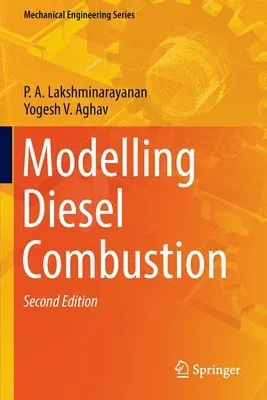1 IntroductionRole of Internal Combustion EnginesDevelopments in DI
Diesel enginesModelling of combustion in DI diesel engines2
Phenomenology of diesel Combustion and modellingCombustion
ModelEmission modelsTheme of the book3 ExperimentsStudies in a
bombReal engine studies4 Turbulent Structure of the Diesel
SprayVaporising sprayCombusting spraysSummary of the model for
vapourising and combusting spraysModern view of the vaporising and
burning spray5 Ignition Delay in a Diesel EngineDefinition and
Measurement of Ignition DelayClassical model for Ignition Delay and its
extension to other fuelsPhenomenological model of Ignition delay6 Heat
Transfer7 Heat Release in Indirect Injection enginesDescription of the
Phenomenological modelExperimental techniqueResults and discussions8
Mixing correlations for smoke and fuel consumption of Direct Injection
enginesCharacteristic parameter for air fuel mixing in a cross
flowValidation of the mixing parameterConclusion9 Heat Release in
Direct Injection EnginesHeat Release Rate in Diesel EnginesModel for
Mixing Controlled CombustionInput rate and dissipation rate of turbulent
kinetic energy of fuel sprayModelling three Regimes of heat release
rateSteps to calculate Heat Release Rate using the new modelExperimental
ValidationHeat Release Rate from the ExperimentsEstimation of heat
transfer across the wallsResults10 Prediction of the Rate of Heat
Release of Mixing-Controlled Combustion in a Common-Rail Engine with
Pilot and Post InjectionsAuthors: Anirudh Jaipuria (Formerly with
Ashok Leyland, Chennai), P A Lakshminarayanan (Adjunct Professor, IIT
Kanpur)IntroductionDescription of the ModelMCC modelModelling three
regimes for a single injectionRefining the model in the second
regimeModelling the pilot and main injectionsModelling the
post-injectionExperimental ValidationCharacteristics of the common-rail
injectorExperimental measurement of the ROHR and the effect of TDC
determinationResults and DiscussionDiscussion on the model
constantsSummary11 Hydrocarbons from D I Diesel EnginesHC
modelPredicting HC in the exhaustDiscussions12 Hydrocarbon Emissions
from Spark Ignition EnginesDescription of the Engine ModelComparison
of the model prediction with engine experimentsConclusions13 Smoke
from DI Diesel enginesPhenomenon of soot formationApplication to
engine conditions14 Oxides of Nitrogen from Direct Injection Diesel
EnginesExhaust gas recirculation (EGR)Phenomenology of Oxides of
Nitrogen15 Particulate Matter from Direct Injection Diesel
enginesIntroductionFormation of Particulate MatterDirect Measurement
of PMComponents of Particulate Matter (PM)Sulphur in FuelOilHydrocarbon
from Fuel and Lubricating OilFuelCarbon SootMeasurement of SmokeFilter
Paper Method, Filter Smoke Number (FSN)Opacity meter, Opacity
%Photo-acoustic sensingCorrelation of soot in PM, FSN, and
OpacityCalculation of Total Particulate MatterPM ModelValidation of
CorrelationExperimental ValidationDis

